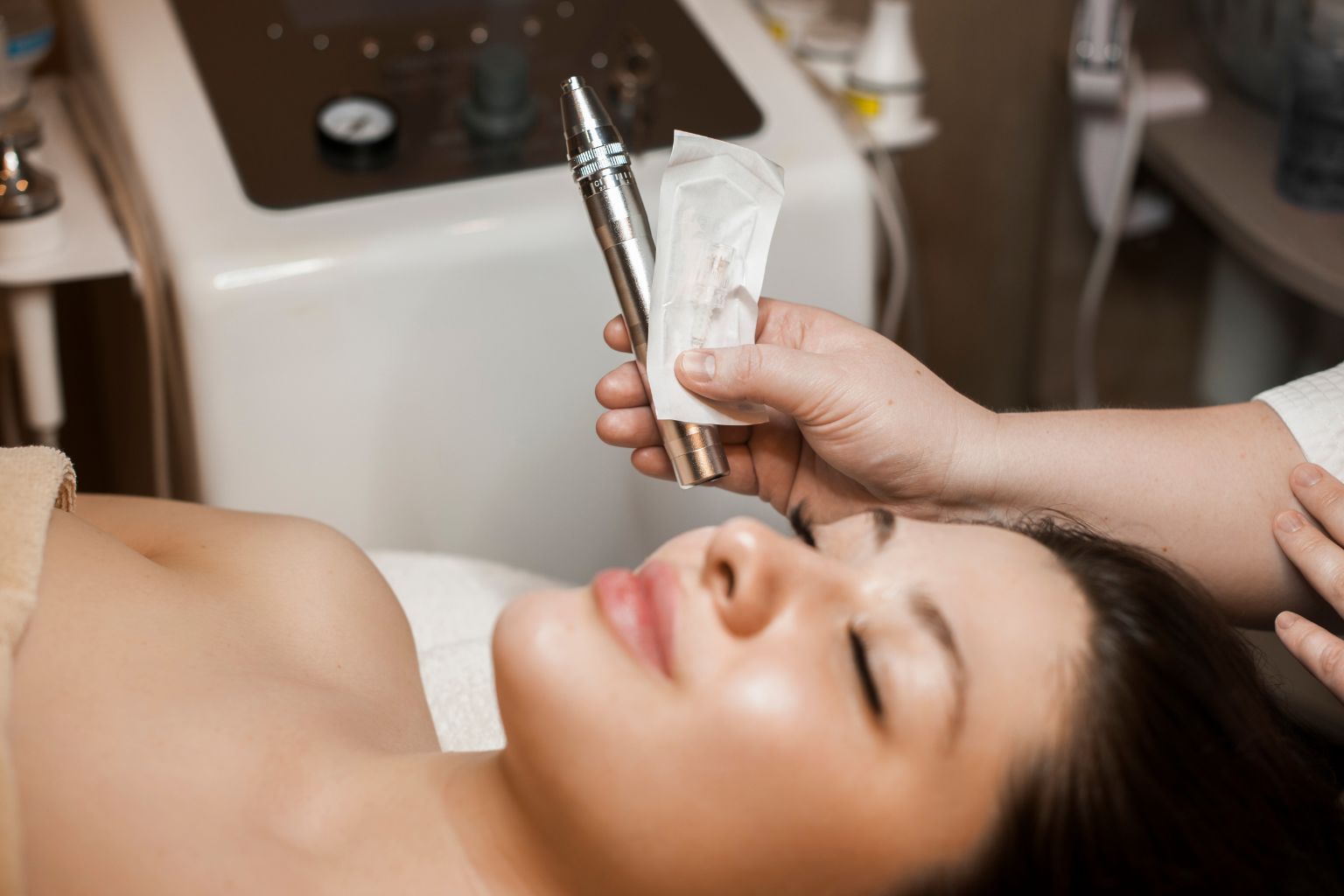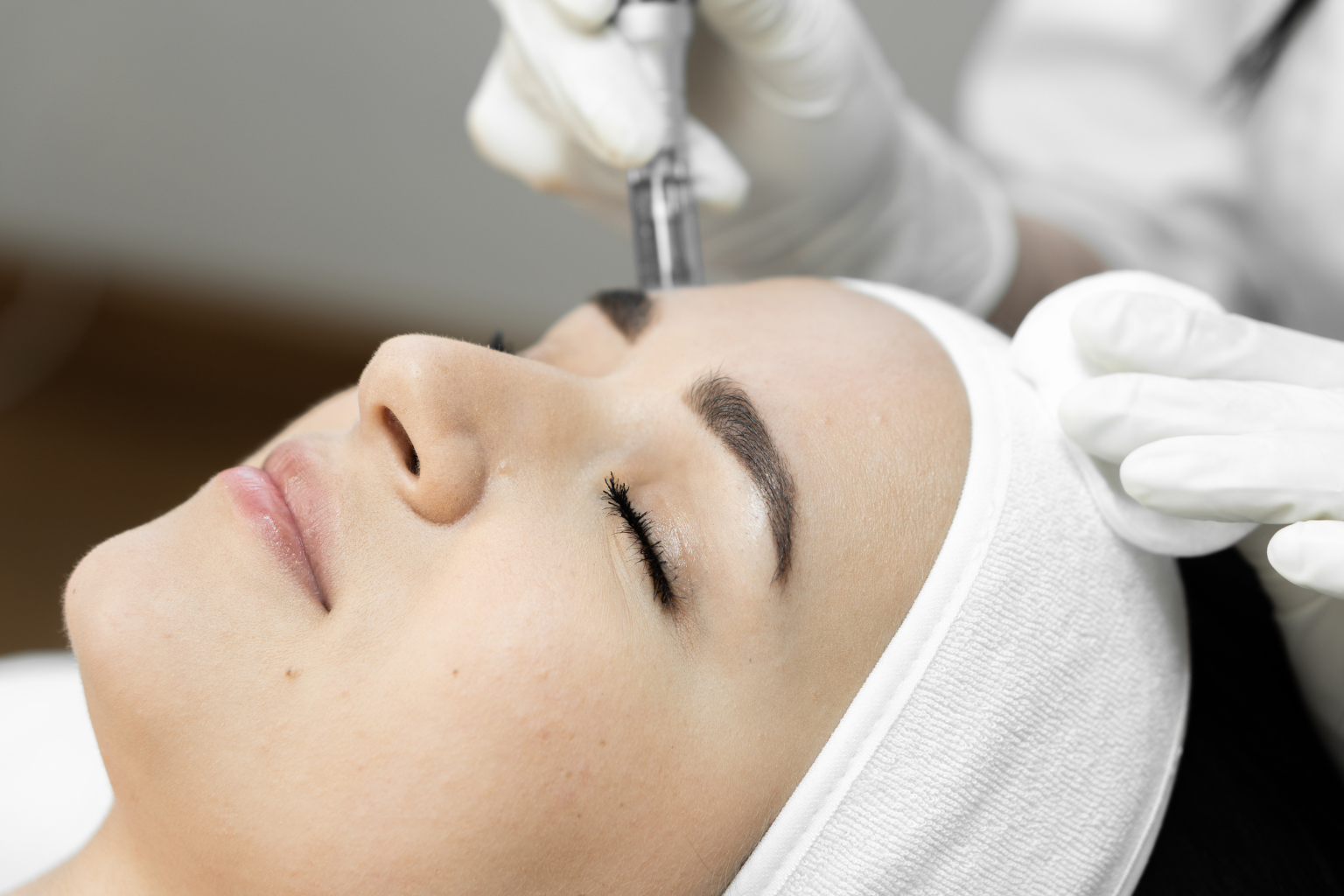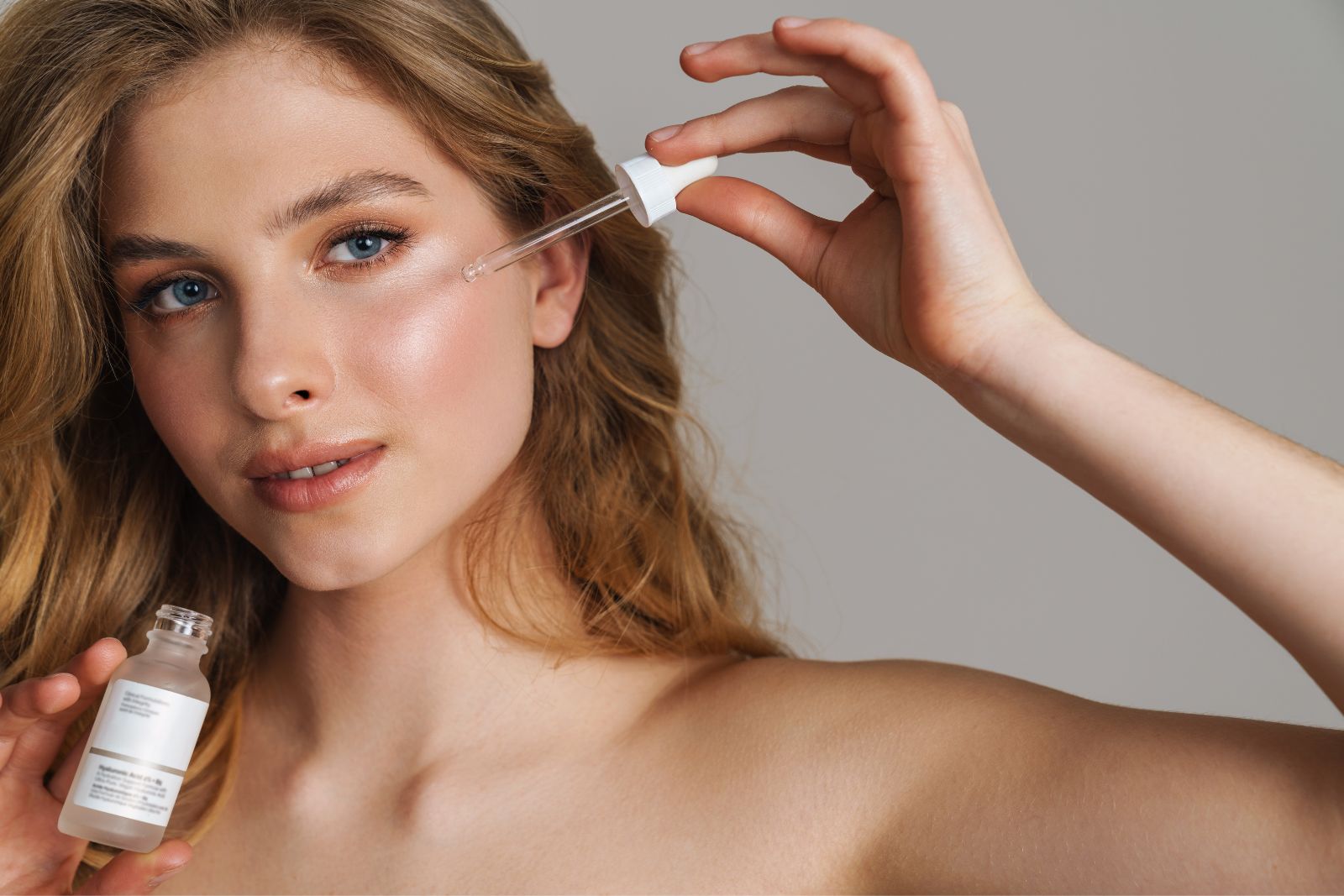Living with acne scars can be a deeply emotional experience—reminders of past struggles that often affect confidence and self-image. Whether they present as boxcar, rolling, or icepick scars, these blemishes can feel permanent, making the quest for effective treatment a priority for many. Fortunately, microneedling has emerged as a transformative and minimally invasive cosmetic procedure specifically designed to reduce the appearance of these scars.
In this blog post, we will explore the unique effectiveness of microneedling for treating acne scars, highlighting key aspects such as:
- The science behind how microneedling breaks down scar tissue and enhances skin texture.
- The specific benefits of microneedling, including its suitability for various skin types and minimal downtime compared to more invasive treatments.
- What sets microneedling for acne scars apart from other microneedling procedures?
- Realistic expectations for results, including the importance of multiple sessions and aftercare.
- Common myths surrounding microneedling, debunked with factual reassurance.
- Essential tips for post-treatment care to maximize your results.
By understanding these facets, you will be better equipped to navigate your journey toward smoother, more confident skin. Join us as we delve deeper into how microneedling can be the key to unlocking your skin’s potential.
Does Microneedling Help Acne Scars?
Microneedling is designed to improve the appearance of acne scars through a scientific approach. The procedure involves using a specialized microneedling device that creates controlled micro-injuries in the skin. These small injuries trigger the body’s natural healing response, leading to the breakdown of scar tissue and the activation of collagen and elastin production. This process is essential for enhancing skin texture and gradually smoothing the uneven surface left behind by past atrophic scars.
Types of Acne Scars
One of the remarkable aspects of microneedling is its ability to effectively target various types of acne scars, including boxcar, rolling, and icepick scars.
- Boxcar scars, which have defined edges, may respond well to microneedling as the procedure helps to fill in the depressions by stimulating collagen production in the area.
- Rolling scars—characterized by a wave-like texture—can also see a significant improvement, as microneedling works to smooth the skin over time.
- Icepick scars, known for their deep and narrow appearance, may require deeper penetration but can benefit from the collagen-boosting effects of microneedling as well.
Benefits of Microneedling Treatment for Acne Scars
Microneedling offers a multitude of benefits for individuals looking to reduce the appearance of acne scars and enhance their overall skin texture. By stimulating collagen and elastin production, microneedling works to smooth out the uneven surfaces created by scars, leading to a more refined and youthful appearance. This treatment not only targets existing scars but also helps prevent new ones from forming by promoting healthier skin regeneration.
Another compelling aspect of microneedling is its safety and effectiveness for most skin types. Whether dealing with old scars from past acne breakouts or more recent ones, microneedling provides a versatile solution that adapts to individual skin needs. Its minimally invasive nature makes it an attractive option for those who are wary of more aggressive treatments.
Remember that microneedling boasts minimal downtime compared to other procedures, such as chemical peels or laser treatments, which can require extended recovery periods. After a treatment, many patients experience only minor redness and slight swelling, akin to a mild sunburn, which typically subsides within a day or two. This allows individuals to quickly return to their daily activities while still enjoying the transformative effects of this innovative treatment.
What Makes Acne Scar Microneedling Sessions Different?
Microneedling specifically tailored for acne scars necessitates a unique approach, incorporating specific depths and techniques that distinguish it from general microneedling treatments. The nature of acne scars—from shallow boxcar scars to deeper icepick scars—demands precision in both depth and technique to effectively target the underlying tissue.
During a treatment for acne scars, practitioners often adjust the needle depth to penetrate the scar tissue more thoroughly, maximizing collagen production while minimizing the risk of damage to surrounding healthy skin. This level of customization is crucial for achieving optimal results and ensuring a smoother skin texture.
Moreover, treating sensitive, scarred skin relies heavily on professional expertise. An experienced practitioner understands the intricacies involved, including assessing the scars’ severity and choosing the appropriate settings on the microneedling device. This expertise is essential for achieving successful, safe outcomes while addressing any potential concerns or complications that may arise.
By entrusting the microneedling process to skilled professionals, patients can feel confident that their individual needs are prioritized, ensuring that the treatment is effective and supportive of their skin’s health.
Results You Can Expect: Microneedling Before and After Acne Scars
The transformative potential of microneedling for reducing scars is well-studied and often best illustrated through real-world examples. Many individuals who have struggled with various types of acne scars report remarkable improvements in their skin’s appearance following treatment.
For instance, after completing a series of microneedling sessions, scars became significantly less prominent, resulting in a smoother and more even complexion.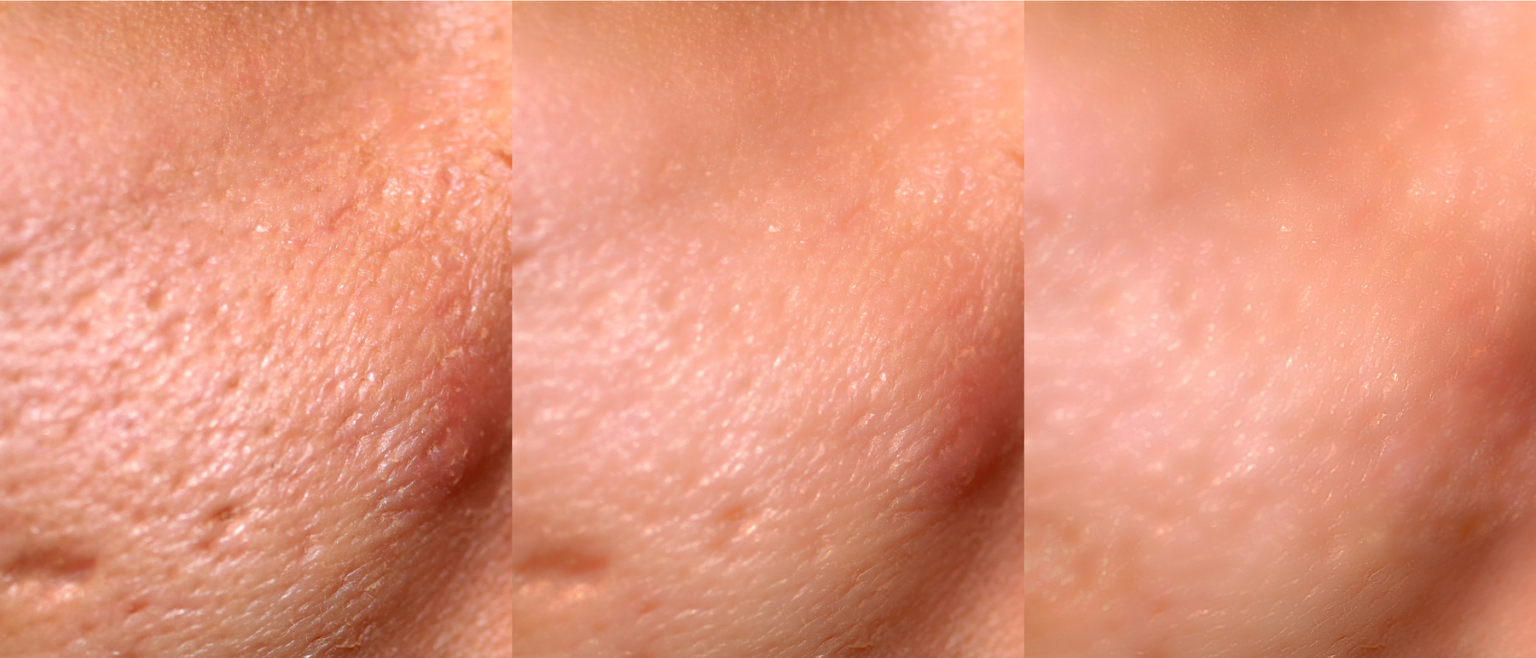
It’s important to understand that the results from microneedling are not instantaneous. The nature of skin healing means that improvements occur gradually over time as collagen and elastin production ramps up in response to the treatment. Many patients notice subtle changes after their initial visits, with more dramatic results becoming evident after multiple treatments. Typically, a series of three to six sessions spaced four to six weeks apart is recommended to achieve optimal outcomes. As the skin continues to rejuvenate, individuals can expect enhanced texture and a significant reduction in the appearance of scars.
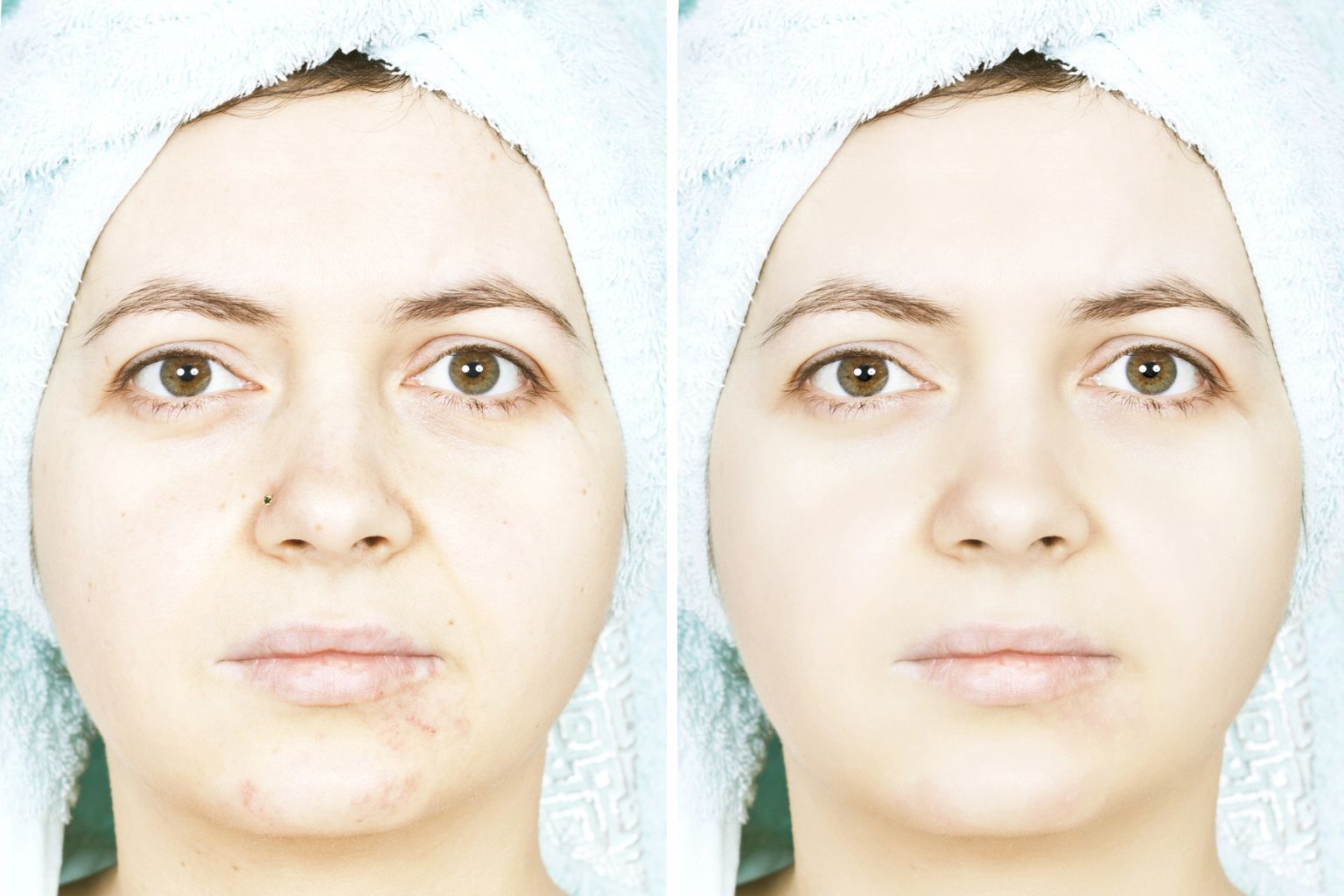
These gradual yet impactful improvements underscore the importance of setting realistic expectations. It is a journey—one that builds over time to deliver smoother, healthier skin that reflects newfound confidence. This steady transformation can lead to a profound impact, allowing individuals to embrace their natural beauty and move forward without the burden of past scars.
How Many Microneedling Sessions for Acne Scars?
Determining the optimal quantity and frequency for microneedling sessions aimed at reducing acne scars is crucial for achieving the best results. Generally, it is recommended to undergo microneedling treatments every 4 to 6 weeks. This timeframe allows the skin ample time to heal and regenerate between visits, maximizing the benefits of collagen production and overall skin rejuvenation.
However, it’s important to note that treatment plans are not one-size-fits-all. Each individual’s skin is unique, and factors such as the severity of their scars and specific skin types play a significant role in customizing a treatment regimen. For instance, those with deeper or more pronounced acne scars may require more frequent or intensive treatments, while individuals with milder scarring might benefit from a more spaced-out approach.
This personalized consideration not only enhances the effectiveness of the treatment but also ensures the safety and comfort of every individual undergoing the procedure.
Microneedling for Acne Scars: Myths vs. Facts
When considering microneedling as a treatment for acne scars, it’s essential to address some common misconceptions that can create confusion or hesitation.
- “Acne scars can’t be treated effectively.” In reality, microneedling has been shown to be a highly effective procedure for reducing the appearance of various types of acne scars, including boxcar, rolling, and icepick scars. The treatment works by stimulating collagen and elastin production, which are vital for skin healing and rejuvenation, ultimately leading to smoother, more even skin texture over time.
- “Microneedling is painful and unsafe.” While it is true that the procedure involves creating micro-injuries in the skin, many patients report minimal discomfort during the session. A topical numbing cream is applied prior to treatment, ensuring a more pleasant experience. Microneedling is also considered a safe and minimally invasive option, particularly when performed by trained professionals who understand the intricacies of treating sensitive, scarred skin.
By debunking these myths with factual, evidence-based information, individuals can make informed decisions about their skincare options. Microneedling is a reliable and scientifically-backed treatment that offers hope for those seeking to address the emotional and physical impacts of acne scars.
Tips for Post-Treatment Care
Following your treatment, proper post-treatment care is crucial for optimizing results and ensuring your skin heals effectively. Here are some essential tips to keep in mind:
- Avoid Direct Sun Exposure: After microneedling, your skin will be more sensitive and susceptible to damage from the sun. It’s vital to avoid direct sunlight for at least 24 to 48 hours following the procedure. If outdoor exposure is unavoidable, apply a broad-spectrum sunscreen with a high SPF to protect your newly treated skin.
- Use Gentle Skincare Products: In the days following your treatment, opt for gentle, non-irritating skincare products. Avoid harsh cleansers, exfoliants, and skincare ingredients like retinoids or acids that can irritate sensitive skin. Instead, focus on hydrating and soothing products to aid in the recovery process.
- Stay Hydrated: Keeping your body well-hydrated will benefit your skin’s healing. Drink plenty of water before and after your treatment to support optimal recovery and maintain skin elasticity.
- Consider Professional-Grade Aftercare Products: Using professional-grade aftercare products can enhance your results significantly. These products are formulated to promote healing and provide essential nutrients that your skin craves post-treatment.
Taking these steps seriously not only helps reduce the risk of complications but also enhances the overall effectiveness of your acne scar treatment journey.
Can Microneedling Help Your Acne Scars?
Determining whether microneedling is the right treatment for your acne scars involves considering several key factors, including the severity of your scars, your overall skin health, and your expectations for treatment outcomes. Microneedling is particularly effective for various types of acne scars, including boxcar, rolling, and icepick scars. If you have these types of scars and are looking for a minimally invasive treatment option, you may be a suitable candidate.
What if I have Active Acne?
However, it’s essential to assess your skin’s condition prior to treatment. Those with active acne or certain skin conditions, such as eczema or psoriasis, may need to address these issues before engaging in microneedling. Additionally, realistic expectations are crucial; while many patients see significant improvement, results vary based on individual factors, including skin type and the extent of scarring.
To ensure that microneedling is the right approach for you, consulting with experienced professionals is vital. During your consultation, a knowledgeable provider will evaluate your skin, discuss your concerns, and tailor a treatment plan that meets your specific needs. This personalized approach not only enhances the effectiveness of microneedling but also aligns your treatment with your unique skin goals.
Embrace Your Transformation: The Benefits of Microneedling for Acne Scars
Microneedling offers a range of benefits that make it an exceptional treatment option for reducing the appearance of acne scars. By stimulating collagen and elastin production, this innovative procedure plays a crucial role in creating smoother, more radiant skin, effectively addressing various types of scars, including boxcar, rolling, and icepick scars. Beyond its physical benefits, microneedling can also have a significant positive impact on your self-confidence, allowing you to move forward without the emotional weight of acne scars.
If you’re ready to explore how microneedling can help you achieve clearer, healthier skin, we encourage you to book a consultation at Aesthetics MedSpa. Our experienced professionals are here to guide you through the process, tailoring a treatment plan that meets your individual needs and skin type.
Located in Reno, Nevada, Aesthetics MedSpa offers expert care with state-of-the-art tools designed to optimize your results. We look forward to helping you embark on this journey towards smoother, more confident skin!
Unlock Your Confidence with Microneedling
Embarking on the journey towards smoother, clearer skin is entirely possible with the right approach and support. Microneedling may stand out as an effective treatment for reducing the appearance of acne scars, offering hope for those who may have felt discouraged by previous attempts to improve their skin. Its unique ability to break down scar tissue and stimulate collagen production makes it a powerful ally in your skincare arsenal.
As you consider your options, remember the key benefits of microneedling: improved skin texture, suitability for various skin types, minimal downtime, and the necessity of professional expertise to ensure optimal results. With each treatment, you can expect gradual transformations, reaffirming your path to renewed confidence.
We invite you to take the first step towards reclaiming your skin. Consult with the experienced professionals at Aesthetics MedSpa in Reno, Nevada, to explore how microneedling can address your acne scars and enhance your skin’s overall appearance. Together, let’s unlock your skin’s potential and help you embrace a brighter, more confident future.
Quick Reference: Microneedling for Acne Scar Treatment
1. Emotional Impact of Acne Scars: Acne scars can have a profound effect on self-esteem, making effective treatments essential for restoring confidence.
2. What is Microneedling?: A minimally invasive procedure that reduces the appearance of acne scars by breaking down scar tissue and stimulating collagen production.
3. The Science Behind Microneedling: Creates controlled micro-injuries in the skin, promoting natural healing processes and enhancing skin texture.
4. Types of Acne Scars Targeted: Effective for various scar types, including boxcar, rolling, and icepick scars.
5. Benefits of Microneedling:
- Improves skin texture.
- Safe for most skin types.
- Reduces both old and new scars.
- Minimal downtime compared to other treatments.
6. Unique Techniques for Acne Scars: Microneedling for acne scars requires specific depths and techniques, making professional expertise essential for optimal results.
7. Realistic Expectations: Results are gradual, with noticeable improvements occurring after multiple sessions.
8. Treatment Frequency Recommendations: Generally, treatments should be spaced every 4-6 weeks, with plans customized based on scar severity and skin type.
9. Myths vs. Facts: Address common misconceptions about microneedling, such as the belief that acne scars can’t be treated effectively or that the procedure is painful and unsafe.
10. Post-Treatment Care Tips:
- Avoid direct sun exposure.
- Use gentle skincare products.
- Stay hydrated.
- Consider professional-grade aftercare products to enhance results.
11. Is Microneedling Right for You?: Assess your scars and skin health, and consult professionals for a tailored treatment plan.
12. Final Encouragement: Consult with Aesthetics MedSpa in Reno, Nevada, for expert care and to explore how microneedling can help you achieve smoother, more radiant skin.

